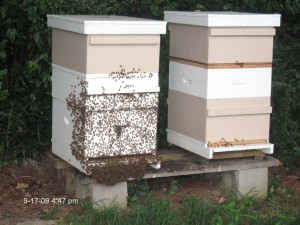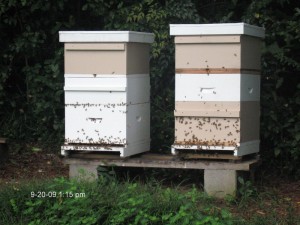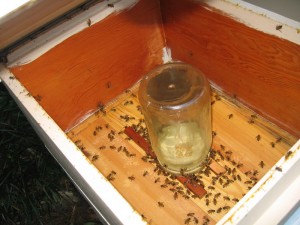Look at these photos, taken three days apart:
It’s pretty clear that the number of bees in the parent hive (on the left) have dwindled dramatically, while the ex-swarm hive (on the right) has continued to build. The feeder box showed a similar picture. Compare the photo below with the one from the previous post, taken a week earlier:
Although it’s possible for bees to drift from one hive to the other, my understanding is that this doesn’t occur to the extent seen here. Either the parent hive is dwindling from disease, or it has swarmed again. “Afterswarms” are known to occur after a primary swarm, and frankly I would prefer this to some hideous disease that might require drastic measures (American foul brood, a bacterial infection, is generally dealt with by burning and burying the hive and all its boxes. It is the main reason why state hive inspection programs were set up, as it is highly contagious once established in a hive). While chemical/antibiotic treatments to prevent or treat nosema, foulbrood, mites, and hive beetles are commonly used in this area, I have done none of these, being concerned with the long-term effects of these treatments. Some of chemicals are incorporated into the comb wax and may weaken the bees over time, and the pests tend to become resistant to the treatments. Instead, I have used physical pest-control methods (drone frame swaps, screen bottom boards, and beetle traps). Now I was beginning to wonder how wise this decision was. I called my mentor for help, but it will be a couple of weeks until we can get together for an inspection. During this time, I will continue to feed them and hope for the best.



